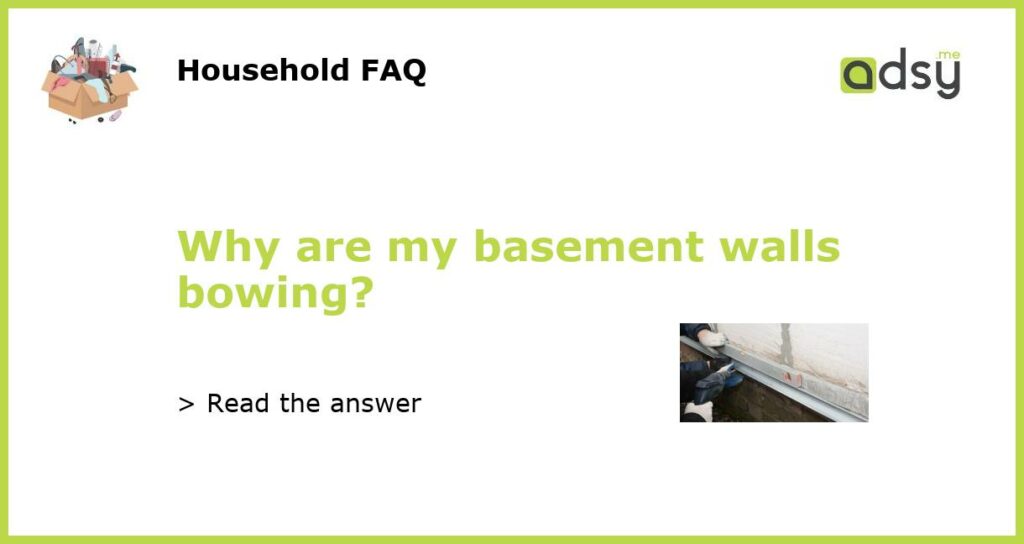Understanding the Cause of Bowing Basement Walls
Bowing basement walls can be a cause for concern for homeowners. Not only can it affect the structural integrity of your home, but it can also lead to water damage and other issues. Understanding the underlying factors that contribute to bowing basement walls can help you take the necessary steps to address the problem.
Hydrostatic Pressure and Soil Conditions
One of the main reasons why basement walls bow is due to hydrostatic pressure. When the soil around your foundation becomes saturated with water, the pressure exerted against your basement walls can cause them to bow inward. This is especially common in areas with heavy rainfall or where the water table is high.
Additionally, the type of soil surrounding your foundation can also contribute to bowing basement walls. Expansive soils, such as clay, have a tendency to absorb water and expand, which can increase the pressure against your foundation walls.
Poor Drainage and Water Management
Poor drainage and water management can exacerbate the problem of bowing basement walls. If water is not properly redirected away from your foundation, it can accumulate around the walls and increase the hydrostatic pressure. This can be caused by issues such as clogged gutters and downspouts, improper grading, or a lack of proper drainage systems.
It’s important to ensure that your property has adequate drainage solutions in place, such as properly functioning gutters and downspouts, proper grading to direct water away from the foundation, and the installation of a French drain or other drainage system if necessary.
Age and Structural Changes
As houses age, they inevitably undergo some degree of settling and structural changes. Over time, this can lead to foundation issues, including bowing basement walls. Factors such as poor construction practices, inadequate reinforcement, or inadequate footing can contribute to this problem.
If your home is older and experiencing bowing basement walls, it may be necessary to have a professional assess the structural integrity of your foundation to determine the best course of action. This could involve reinforcing the walls or even rebuilding them if the damage is severe.
Signs and Solutions for Bowing Basement Walls
If you suspect that your basement walls are bowing, there are some signs to look out for. These include horizontal cracks along the walls, inward bulging, gaps between the walls and floor or ceiling, and water damage. If you notice any of these signs, it’s important to act promptly to prevent further damage.
To address bowing basement walls, a professional foundation repair company should be contacted. They will assess the extent of the damage and recommend the appropriate solution. This could involve installing wall anchors or braces to stabilize the walls, waterproofing the basement to prevent further water damage, or in more severe cases, rebuilding the walls entirely.

